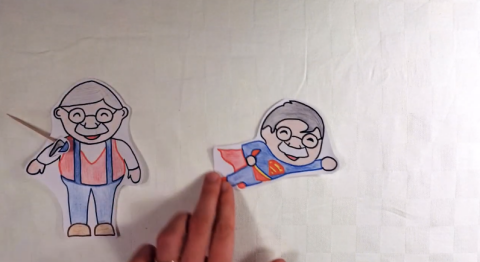M2.3 | Evaluation of force contributions to the damage evolution and failure analysis of metallic arthroplasty components
Funding period: Sep 2017 to Apr 2022
Researcher: Maria Herbster, née Crackau
Wrap-up
Keywords: Damage analysis, retrieval study, in vivo corrosion, TiAI6V4, Ti-Cr alloys, microstructural modification, heat treatment, crevice taper corrosion, biomedical implant application
Background:
Besides the prevailing success of total joint replacements in modern orthopedic surgery, a frequently high number requires premature revision surgeries. The implant-related failure mechanisms and critical damage factors that occur in vivo on artificial joint tapers are not comprehensively examined. Furthermore, observed taper corrosion damage has until now not been reproduced in laboratory studies. The relationship between microstructure, wear resistance, corrosion mechanisms and metal ion release of Ti-based and CoCr-alloys is yet not fully understood. This is due to the variability of the alloys microstructure, which is influences by various factors, including chemical composition, manufacturing and finishing.
Objective:
The aim of this PhD project is to broaden the understanding of in vivo damage mechanisms on endoprostheses' modular taper interface and to develop technical solutions that reduce the risk factors of premature implant failure. In order to achieve this objective, four different project modules were defined including ex vivo failure analysis, crevice corrosion testing, TiAI6V4 microstructural modification by heat treatments and the Cr-alloying.
Methods:
Methods include thermal treatment and alloying via arc-melting, metallographic preparation, microstructural characterization (SEM; EDS, EBSD), mechanical testing (hardness, compression tests), tribological and corrosion testing (potentiostatic, -dynamic and crevice corrosion, XPS) as well as biocompatibility testing (e.g. cell viability, attachment and mineralization)
Results:
The failure analysis of retrieved shoulder and hip tapers revealed the occurrence of in vivo corrosion due to mechanical and electrochemical contributions. An increased corrosion susceptibility was correlated to the alloy’s microstructure. The developed test method reproduced the damage patterns found on retrieved implant tapers and revealed a microstructural effect on corrosion under inflammatory crevice conditions. Significant improvements for implant applications have been achieved through adapted processing of the TiAl6V4 alloy and Ti macro-alloying with chromium.
Conclusions:
The PhD project developed a suitable test setup that simulates in vivo taper crevices and demonstrated microstructural effects on material’s crevice corrosion susceptibility under inflammatory conditions. This finding gives new insights into the metal ions release due to implant’s crevice corrosion.
In addition, the effect of different TiAI6V4 microstructures on cell behavior, wear and corrosion properties are shown and highlights the relevance of an adapted processing of TiAI6V4 alloy for improved implant application.
Another approach is Cr-alloying of Ti-based alloys which demonstrates improvements in wear and corrosion resistance. Based on the obtained research results, material sciencebased recommendation can be used for improved implant performance.
Originality:
The PhD project performed research at the intersection between medicine and material science with a special focus on the in vivo implant degradation mechanisms from a microstructural viewpoint. A combination of different advanced methods (cell, tribology, corrosion and material testing) were applied that allow to evaluate the material properties that are required for medical implant application. This project gives new insights into the in vivo damage mechanisms and developed material improvements for endoprostheses.



